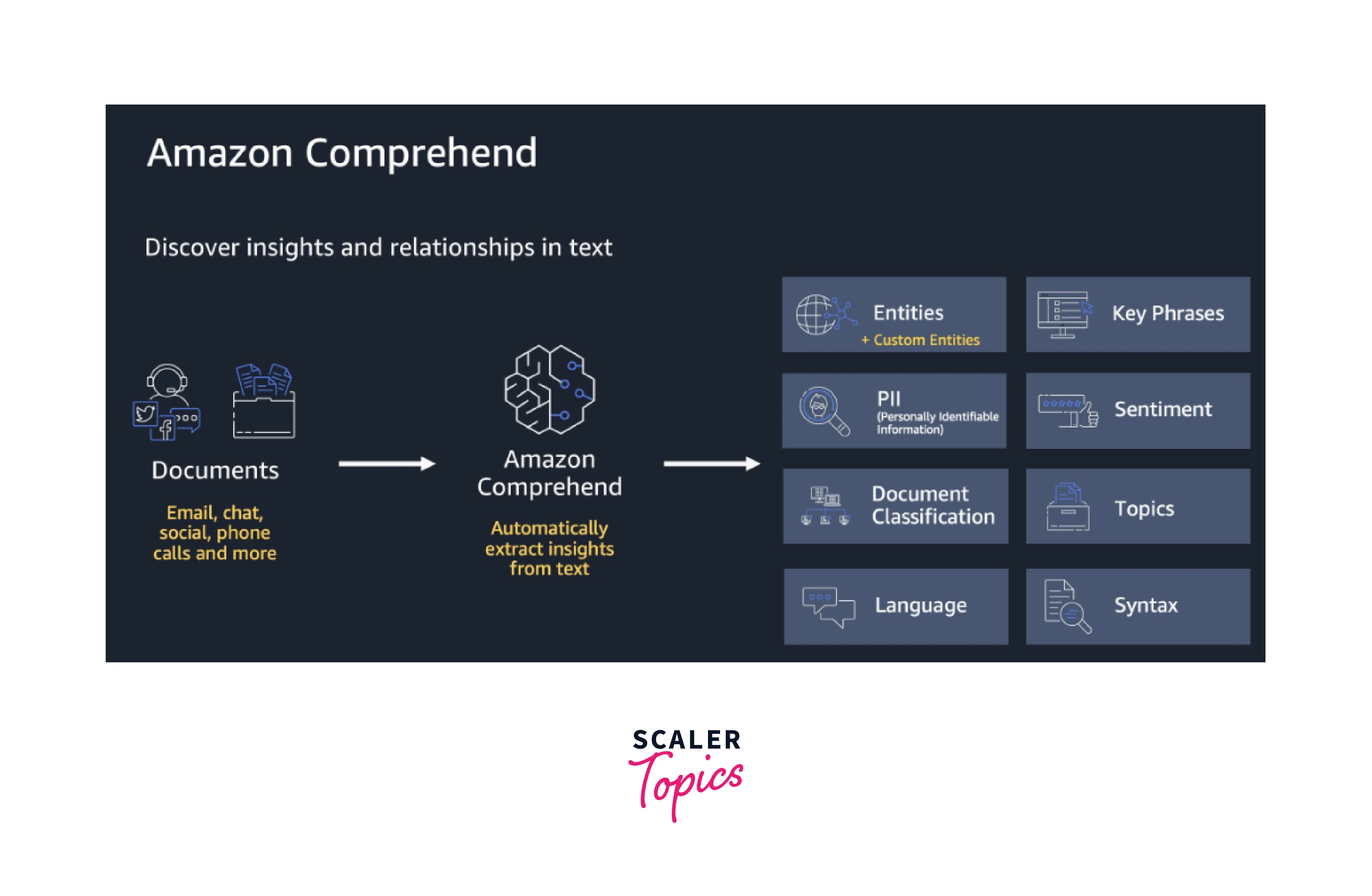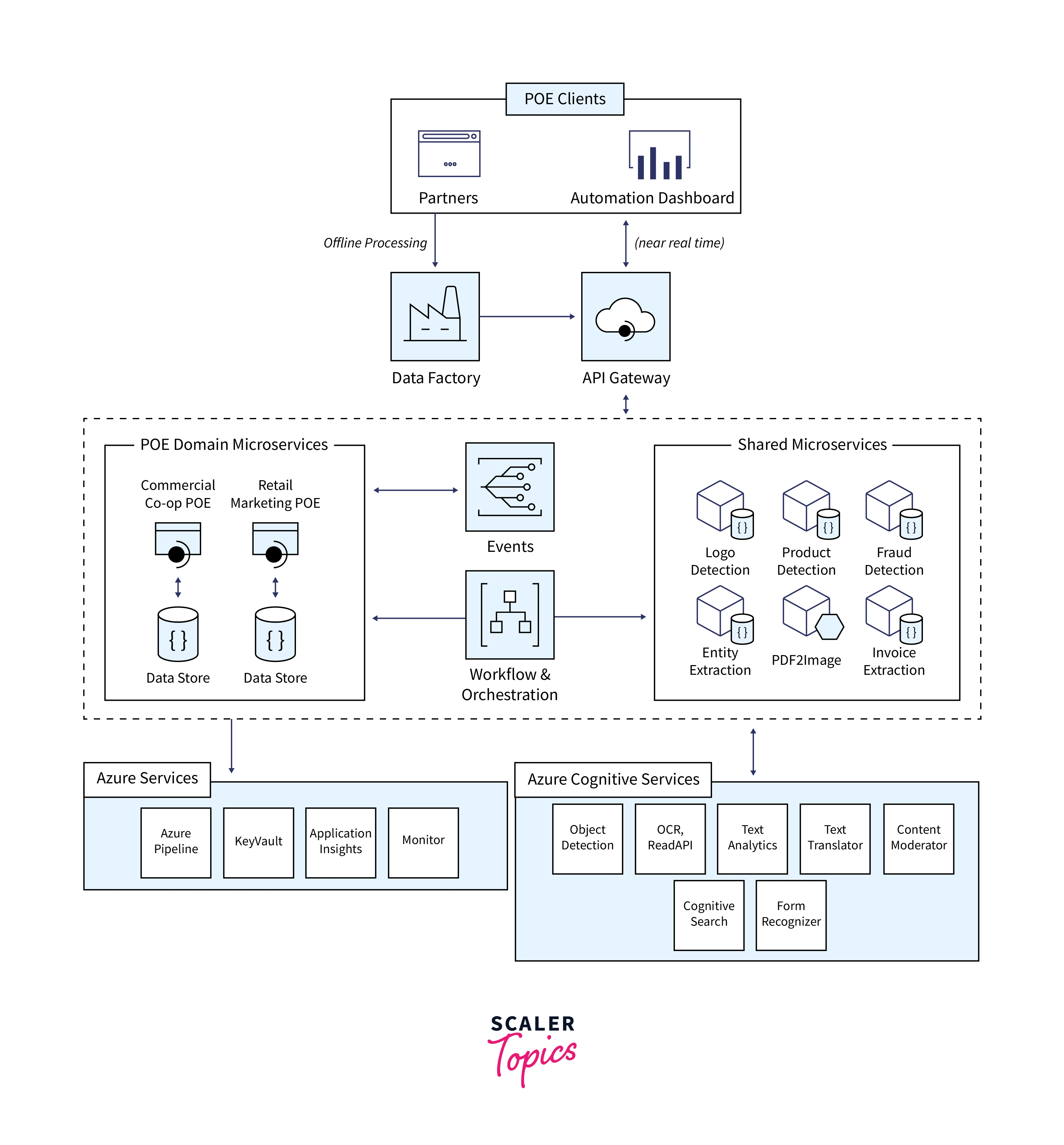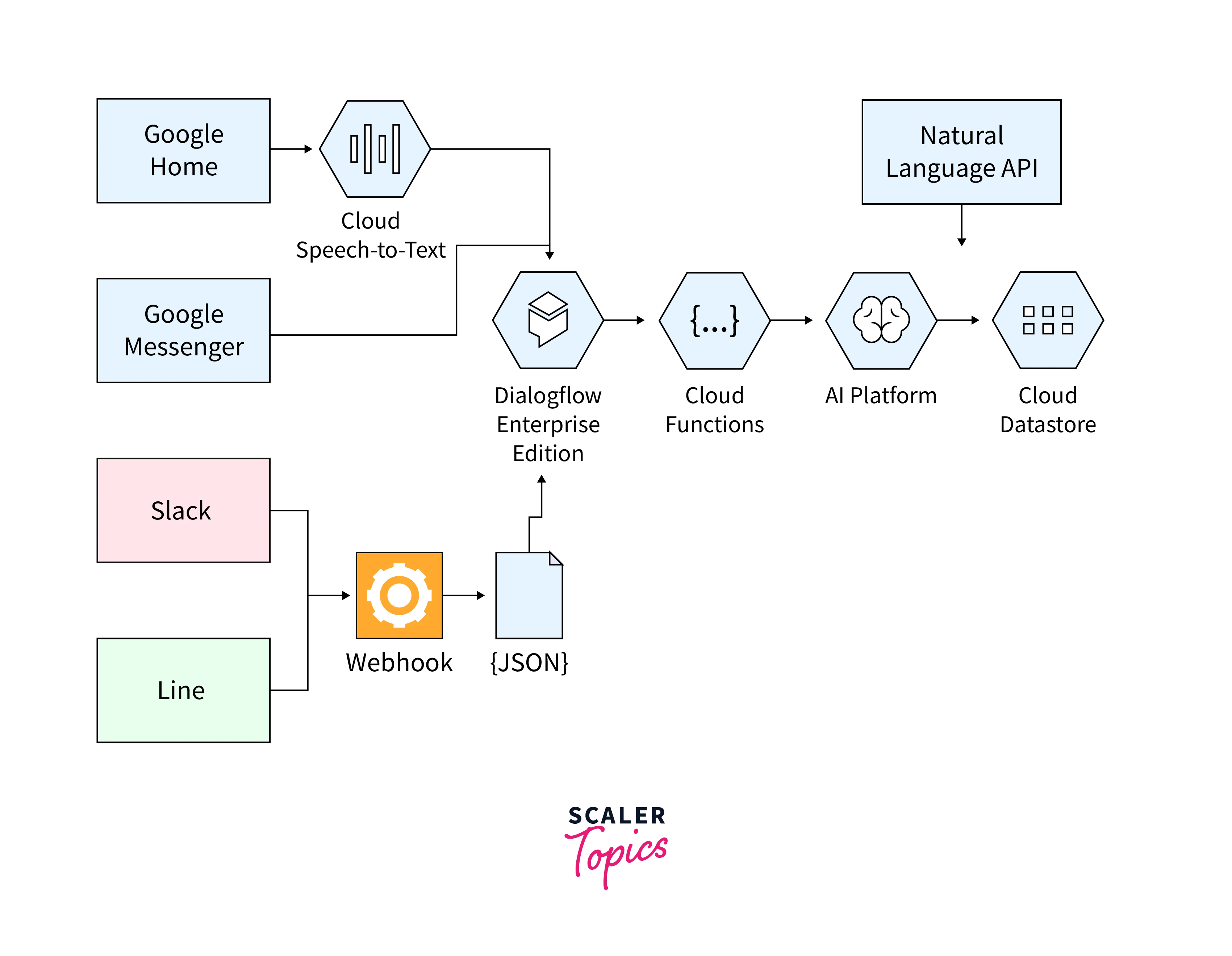How to use NLP on Cloud
Overview
The NLP on the cloud is quite widely used these days and is the backbone of technologies like voice assistance, chatbots, etc. The cloud service provides us with various APIs and other facilities that let us extract the information from large data sets and use them for our applications, such as feature detection, voice assistance, social media recommendation, etc. A wide variety of already existing data sets can also help us if we want to start our specific business. With cloud computing, we can use NLP cloud data and other cloud computing services to run our business on the cloud. Some of the widely used facilities are- Amazon Comprehend, Microsoft Azure Cognitive Services, Google Cloud Natural Language, Google Healthcare Natural Language AI, Google AutoML, etc.
Pre-requisites
Before learning about how we can use NLP on the cloud, let us first learn some basics about NLP itself.
- NLP stands for Natural Language Processing. In NLP, we analyze and synthesize the input, and the trained NLP model then predicts the necessary output.
- NLP is the backbone of technologies like Artificial Intelligence and Deep Learning.
- In basic terms, we can say that NLP is nothing but the computer program's ability to process and understand the provided human language.
- The NLP process starts by first converting our input text into a series of tokens (called the Doc object) and then performing several operations of the Doc object.
- A typical NLP processing process consists of stages like tokenizer, tagger, lemmatizer, parser, and entity recognizer. In every stage, the input is the Doc object, and the output is the processed Doc.
- Every stage makes some kind of respective change to the Doc object and feeds it to the subsequent stage of the process.
Introduction
Cloud computing is one of the most widely used services that provide us with numerous features like easy maintainability, security, automation, rapid scalability, raid elasticity, resource pooling, etc. These features make cloud one of the most featest growing industries in the world.
A question that comes to our mind is- can we use the Natural Language processing features on the cloud? Well, the answer to the question is yes, we can use the NLP on the cloud. The NLP on the cloud is quite widely used these days and is the backbone of technologies like voice assistance, chatbots, etc. With the popularity of these technologies, giant cloud service providers are also providing a lot of facilities to use NLP on the cloud. In this article, we will be learning about the NLP services provided by various cloud service providers like Amazon, Google, Microsoft, etc.
Cloud computing is quite affordable nowadays; hence, cloud service providers are also making the NLP service affordable for public users so that it can be widely used. The cloud service provides us with various APIs and other facilities that let us extract the information from large data sets and use them for our applications, such as feature detection, voice assistance, social media recommendation, etc.
A wide variety of already existing data sets can also help us if we want to start our specific business. For example, there are numerous chatbot data available on the cloud that we can use to process our customers. With cloud computing, we can use NLP cloud data and other cloud computing services to run our business on the cloud. This not only lowers the cost but also makes the business highly scalable.
Let us now learn about the various ways through which we can use NLP on a cloud.
Platforms available
Almost all the giant cloud service providers provide the support of NLP services let us discuss each of them.
Amazon Comprehend
Amazon's cloud services, or AWS, provide NLP services under the name Amazon Comprehend. The Amazon Comprehend can extract the key sentences and phrases out of the provided text and then identify its language and sentiment. For doing so, it uses machine learning models and algorithms. We can use Amazon Comprehend with all the AWS applications like EC2 instances, etc. Some of the most important features provided by Amazon Comprehend are:
- tokenization (converting the input text into tokens).
- sentiment analysis (extracting the accurate meaning out of the provided text)
- automation (automates organization of the text files, etc.)
Please refer to the image provided below for an overview of the service.

The Amazon Comprehend Medical is a pre-trained medical variant that backs up the Amazon Comprehend and thus makes it so popular, reliable, and accurate. As the name suggests, Amazon Comprehend Medical contains information related to medical science. It can easily identify the information related to the medical field from the provided text. It can even provide us with an advanced medical analysis of the records thus, it can help in obtaining the medical condition of patients.
Using GCP
Google's GCP or Google Cloud Platform lets us use the NLP services. The GCP provides us with numerous services like Google Natural Language API, Google AutoML, Google Healthcare Natural Language AI, etc. Let us see the process of using the NLP on the cloud (GCP platform) with the help of an example.
Step 1. Login to the GCP platform. Step 2. Create an API key by setting the environment variable with our own PROJECT_ID. Step 3. Create a service account that helps us to access the various features of the Google Natural Language API and other such APIs. Step 4. Create the credential which is used to login into the newly created service account. Step 5. We can now connect our instance using SSH and then open the Compute Engine tab to use the various API service.
To learn more about it, and for the practical demonstration and lab, you can refer to the official page here.
Microsoft Azure Cognitive Services
Microsoft's cloud service Azure is also quite popular in providing NLP on the cloud. Microsoft Azure provides NLP services for a lot of users like developers, testers, public users, etc.
The Microsoft Azure Text Analytics API is one such example. It can be used by the developers to build an application that can help in sentiment analysis and language identification for the provided text. Similarly, Azure also comes with the Microsoft Azure Language Understanding Intelligent Services that can be used to understand more complex things than the intent of the user. It can even match the human level of accuracy with the help of adequate data sets. The Microsoft Azure Language Understanding Intelligent Services is widely used by developers to build the applications like voice-powered applications, chatbots, customer service portals, etc.
Please refer to the image provided below for an overview of the service.

Google Cloud Natural Language
Google also comes up with the Google Cloud Natural Language that provides us with features like sentiment analysis, categorization, syntax analysis, entity recognition, etc. Google's very own deep learning modules back us the Google Cloud Natural Language services, and that makes it so accurate and popular. The Google deep learning modules are the backbone that runs the famous Google services like language understanding, Google Search engine, Google Assistant, etc.
We can use the pre-trained models of the Google Natural Language APIs to apply the NLU to our application and use the features like content classification, entity sentiment analysis, entity analysis, syntax analysis, semantic analysis, etc.
Google also provides us with services like Google Healthcare Natural Language AI, Google AutoML, etc.
Refer to the image provided below for more clarity.

Third-Party options
We can also use other options that support NLPon cloud besides these cloud service providers. One such example is using a third-party API for our use case. Let us learn about it in detail.
APIs
There are numerous APIs available in the market that provides NLP services. Some of the companies and their popular APIs are:
- Diffbot: The company provides us with features that let us extract the data of the websites, etc.
- MonkeyLearn: The company provides us with features or services that can be used to automate unstructured data workflow.
Many more paid and unpaid service providers provide us with APIs to support NLP on the cloud. We should select the right API for our work as each service provider or vendor has its weakness and strength. So, a good application depends mainly on the selection of the right API and workflow.
Apart from these, we can also train our model and then use it for our application. We need to go through all the NLP processes for the training and then use the trained model for the analysis and output.
Conclusion
- The NLP on the cloud is quite widely used these days and is the backbone of technologies like voice assistance, chatbots, etc.
- The cloud service provides us with various APIs and other facilities that let us extract the information from large data sets and use them for our applications such as feature detection, voice assistance, social media recommendation, etc.
- A wide variety of already existing data sets can also help us if we want to start our specific business.
- Some of the widely used facilities are- Amazon Comprehend, Microsoft Azure Cognitive Services, Google Cloud Natural Language, Google Healthcare Natural Language AI, Google AutoML, etc.
- The Amazon Comprehend can extract the key sentences and phrases out of the provided text and then identify its language and sentiment.
- Microsoft Azure provides NLP services for a lot of users like developers, testers, public users, etc. Google also comes up with the Google Cloud Natural Language that provides us with features like sentiment analysis, categorization, syntax analysis, entity recognition, etc.
